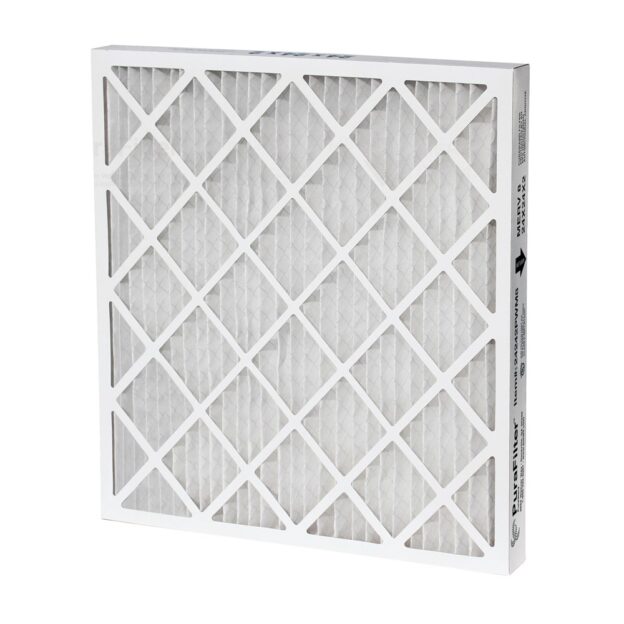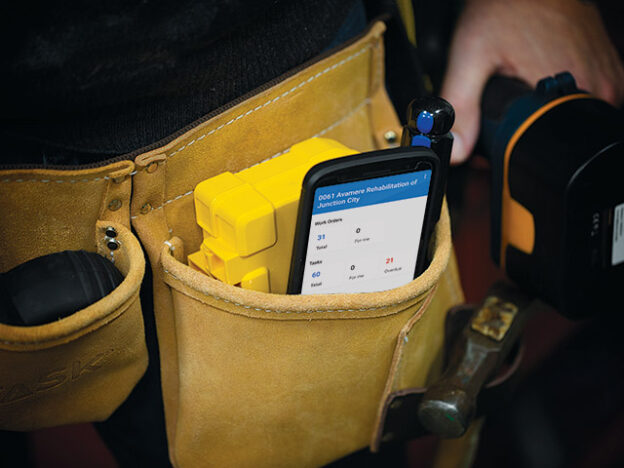What to know about the pandemic vs endemic phase in building operations
Recognizing efficient building management strategies and emerging trends in Senior Living could be vital as the coronavirus transitions into an endemic phase. America’s seniors were devastated by this national crisis; they were the largest population in this country who lost their lives. As of April 11, 2022, “93% of the deaths from COVID-19 were among those 50 years old and older1.” Because of this, there could be increased focus and observation on Senior Living, even as we transition to an endemic phase. We’re here to address the differences between a pandemic vs endemic, key focus areas in Senior Living building operations and actions you can take now to prepare for the future.
Pandemic vs endemic: what can we focus on in Senior Living building operations to prepare?
There are a few key areas you may see renewed focus on in Senior Living building operations. These areas can be divided into two different categories: things that will potentially remain the same, and changes we could expect for the future. Today, we’ll focus on the former category: focus areas that will likely remain – relatively – unchanged.
What will remain the same
- Industry in Flux
- Preventative Testing Measures
- Infection Prevention
- Funding – conditionally
- Survey & Tag focus – temporarily
- Communication needs for residents

What is the difference between a pandemic vs endemic?
Do you find yourself quantifying time before 2019 as “pre-COVID”? Many people are. Unfortunately, there will most likely be no such thing as ‘post-COVID’ – at least, not in our lifetime. Instead, there will be what is called the coronavirus endemic phase. But what is an endemic, really?
According to the CDC, a pandemic is a disease or condition that spreads across regions. In the case of COVID-19, this was a worldwide pandemic. An endemic, however, is a disease or condition present among a population at all times2. It is a result of people growing tired of restrictions and carrying on with everyday life before the initial illness ends3. So, instead of seeing the coronavirus as something that will eventually end, an endemic is more like the flu or the common cold2 – something to be managed, instead of eliminated.
Because of this, a ‘new normal’ must be defined in order to move forward in society. In Senior Living and healthcare specifically, actionable items and cohesive plans will set the standards for the industry moving forward. Employers especially will most likely have a more definitive role of setting policies for their workplace and helping employees think through the changes4.
How will I know when we’ve moved from a pandemic to an endemic phase?

While changing from a pandemic to an endemic isn’t going to be an abrupt ‘ah ha’ moment, there will be a few key indicators for spotting trends towards an endemic phase, including “how many people are developing severe disease at a given time. If we’re seeing increases in that, we’ve got to take action. If we’re not, that’s a different set of actions, and that’s similar to what we do for influenza year over year5.”
When it comes to evaluating a pandemic vs endemic, the endemic phase isn’t going to be focused on the number of cases, but rather the number of hospitalizations and deaths the coronavirus is causing. If numbers continue to trend downwards like they have been so far, then there’s a good chance the pandemic has already begun to transition into the coronavirus endemic phase. But, if we see another huge spike of severe cases and deaths, then COVID-19 is still most likely in the pandemic phase.
Are there any pandemic changes that will remain consistent in Senior Living?
Industry movement: you’re familiar enough with Senior Living and healthcare to know that change is the most reliable aspect of the industry. Senior care is unrecognizable compared to the past. People are living longer with a higher quality of care and life than they did a hundred years ago6. And, as caretakers of their living space, we are constantly changing with them.


Funding. Once the endemic phase hits, COVID-related funding could most likely dissipate shortly thereafter. However, there will most likely always be opportunities to apply for monetary assistance. Keep up-to-date with relevant resources to know where and how you can apply for funding.
It is critical to note that these communities [Assisted Living] respond to local needs, are regulated by states, and are not federally funded or regulated7.
Will COVID-19 government funding for Senior Living stop?
Yes, the government will most likely stop funding Senior Living due to the transitional phase of the pandemic into the endemic. This means the funds received due to COVID-specific expenses will be inaccessible. Even so, there are opportunities to receive government funding for your facility that does not include coronavirus response funds. You can access information about funding resources by investigating:
What testing and infection prevention processes from COVID-19 will stay during the coronavirus endemic phase?
Safety from infectious diseases became our main priority during COVID-19, and with it, our focus switched from fall prevention to masks and testing, not only for the coronavirus, but for other airborne infectious diseases like Legionella as well. Even as the mask mandates disappear, the increased preventative testing most likely will not dissipate any time soon. If you have a suspected COVID case, you’ll still need to test and quarantine, just like you are bi-annually testing for Legionella and responding appropriately in a positive case.


Because of this, it’s important to take advantage of initiatives like the Clean Air in Buildings Challenge to help improve indoor air quality as you protect the health of your residents. Guidelines such as these can help you set a standard for your building that, in conjunction with vaccinations, mask-wearing and physical distancing can help to reduce the spread of infectious diseases8.
Takeaway tip: Infection Prevention, water testing and air monitoring will not only remain as a higher priority in Senior Living, but will most likely increase in frequency and importance. Learn more about Indoor Air Quality here.
View the Clean Air in Buildings Challenge Here
Infection prevention, survey & tags in Senior Living: COVID-19 pandemic vs endemic
The coronavirus forced Senior Living’s attention on infection prevention to a degree we haven’t seen before. Prior to COVID-19, facilities nationwide didn’t require such strict guidelines. Oftentimes, buildings were in danger of falling into lax infection prevention habits: deferring infection prevention protocols or even skipping them altogether as budgets tightened or resources grew thin. In fact, it was a commonly cited F-Tag pre-COVID9. However, the likelihood of relaxed processes such as this continuing in an endemic phase is highly unlikely. Instead, the infection prevention crackdown we saw during COVID-19 will stay most likely for the near future as we transition to the coronavirus endemic phase. Then, we could see it slowly integrated into daily routines. For example; many medical professionals still advise people to mask in public and wash their hands frequently, and will continue to do so as cases spike in the COVID-19 endemic phase10.
Likewise, we most likely won’t see much change to the current survey focus and fines. Hangover pressure and focus on infection prevention will continue to affect regulations for the near-future, so be prepared to see more tags and stricter enforcement for infection prevention in the months to come. Utilizing resources such as Direct Supply® TELS® Platform to organize your daily task and set reminders for life safety, fire prevention, and other survey items could help you stay ahead of the game so your building is ready during the survey window.
Communication and digital devices in the COVID-19 endemic phase
Strategic and creative responses to social isolation were vital in the midst of the pandemic, and will most likely stick around for the long-term. “Smartphone usage for those over 65 has grown from 13 percent 10 years ago to 61 percent today, while tablet use has increased from 6 percent to 44 percent11” which means finding ways to accommodate this will more than likely become a norm for building operations. A greater influx of online communication to family members and friends will remain in Senior Living, boosting the need for facility-wide internet connections and different technology options such as access to tablets and smart televisions.
With internet comes a whole other host of aspects to consider, including:
- Which materials could mess with Wi-Fi transmission
- How many Wi-Fi access points your facility will need
- Preventative measures to ensure residents aren’t tripping over cables
- Aesthetic measures to hide cables
- IT tech support to assist in technical aspects such as set up, technology or internet failure
Takeaway tip: Internet access in Senior Living has become as important as any utility, like water, electricity and heat11.
Senior Living building operations pandemic vs endemic

As the industry moves forward, we will most likely continue to feel the impact of COVID-19 in these focus areas:
- Preventative testing measures
- Infection prevention
- Conditional funding
- Survey and tags
- Communication needs
We’ve also provided resources for you to utilize as you continue to navigate Senior Living building operations as we transition to the endemic phase. However, if you have any questions you will always have the option to contact your Direct Supply representative for additional information.
Where should Senior Living building operations focus Post-COVID?
For the past few years, our focus has almost solely been on how to respond to and prevent COVID-19 from entering our buildings. As we step into the endemic phase, it can feel disorienting – if not COVID, what do we focus on?
The coronavirus pandemic highlighted how important human connections are. The lifestyle and community of Senior Living is a must-have, not an option. Because of this, building operations will be more important than ever to keep that community safe and running smoothly.
Just because the pandemic is no longer going to be a main focus doesn’t mean we won’t feel its effects for years to come. Its impacts are far-reaching, and already we are adjusting our view of Senior Living Building Maintenance in order to best equip industry staff and residents for their future. Learn more about possible upcoming changes and actions you can take now to prepare for the endemic phase in part 2 of our blog.
COVID-19 Pandemic vs Endemic Phase Comparison Chart
In a nutshell: here’s what you need to know about pandemic vs endemic phases in Senior Living
-
https://www.statista.com/statistics/1254488/us-share-of-total-covid-deaths-by-age-group/
-
. https://www.cdc.gov/training/publichealth101/documents/introduction-to-epidemiology.pdf
-
https://docs.google.com/document/d/1Wjpe8zeMDas43cDYDAkddZvCUD-T5CsFIcicm1kfrmU/edit#
-
https://www.mckinsey.com/industries/healthcare-systems-and-services/our-insights/pandemic-to-endemic-how-the-world-can-learn-to-live-with-covid-19
-
https://www.ama-assn.org/delivering-care/public-health/how-we-will-know-when-covid-19-has-become-endemic
-
https://www.cdc.gov/nchs/data/hus/2010/022.pdf
-
https://leadingage.org/Assisted-Living-2021
-
https://www.epa.gov/indoor-air-quality-iaq/clean-air-buildings-challenge
-
https://leadingage.org/regulation/top-five-frequently-cited-f-tags-2022
-
https://www.charlotteobserver.com/news/coronavirus/article257490239.html
-
https://editions.mydigitalpublication.com/publication/?i=740335&p=30&view=issueViewer




